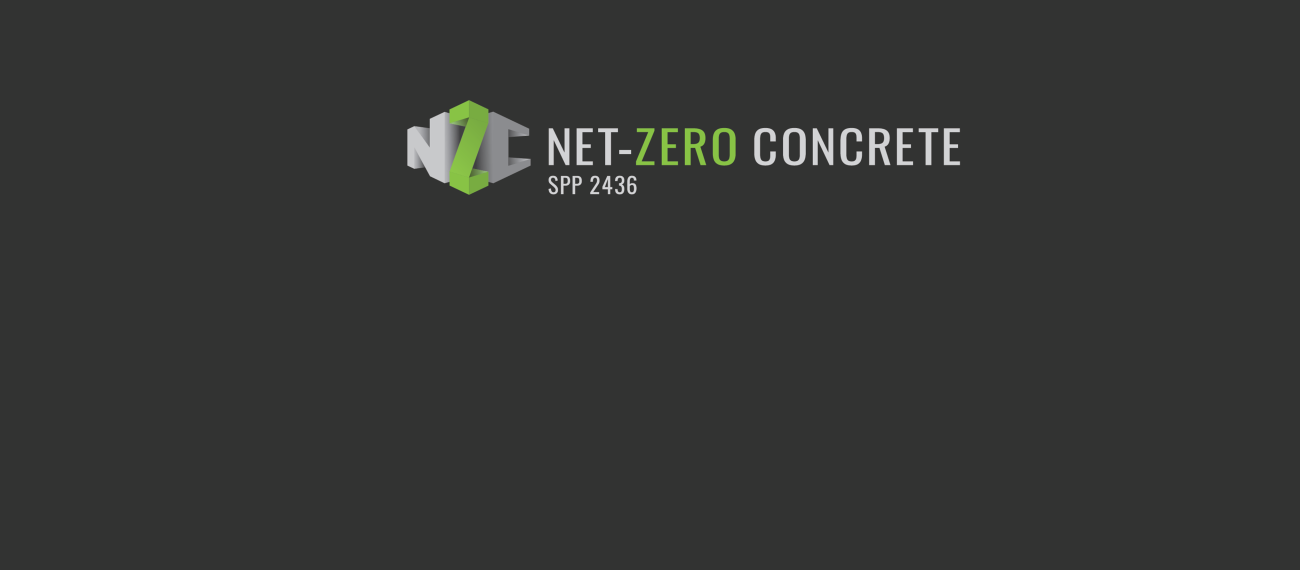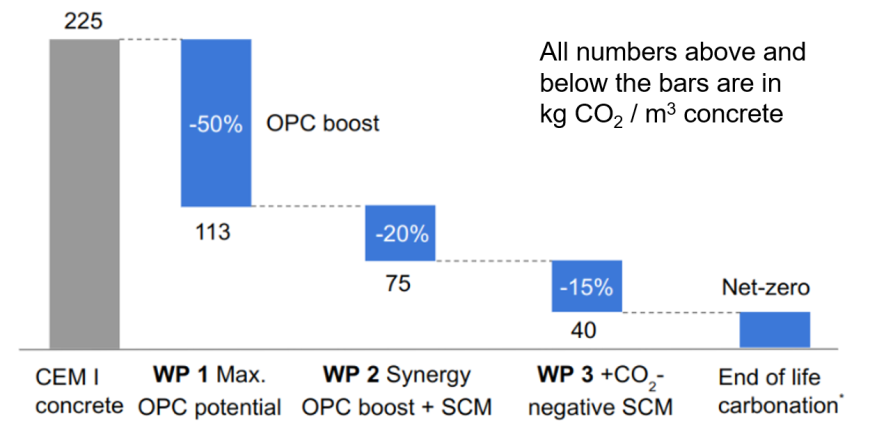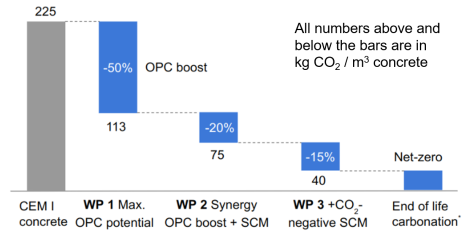Project abstract
The rapid transformation of the concrete industry toward net-zero carbon dioxide emissions requires technologies that can be quickly implemented. This project, therefore, focuses on the production of net-zero concrete using Portland cement as the primary binder. Our approach maximizes the performance of Portland cement in concrete through two main measures. First, we employ a combination of chemical additives and controlled pre-carbonation to increase the amount of ettringite—a key hydration phase—in the binder. Preliminary investigations suggest that this measure enhances the binder’s performance while reducing the required clinker content, thus lowering CO₂ emissions. Second, we integrate pozzolanic supplementary cementitious materials (SCMs) into the optimized OPC. Initially, conventional SCMs are used. These further increase the volume of hydration phases and contribute to a further reduction in CO₂ intensity. Third, we move on to pre-carbonated SCMs, which serve as an active CO₂ sink. The dual strategy of maximizing stable ettringite and using pre-carbonated SCMs leads to net-zero CO₂ emissions. Ultimately, this results in concrete with excellent strength and durability and a net-zero CO₂ footprint.
Applicants:
- Gädt, TUM
Jansen, FAU
Lowke, TUM



